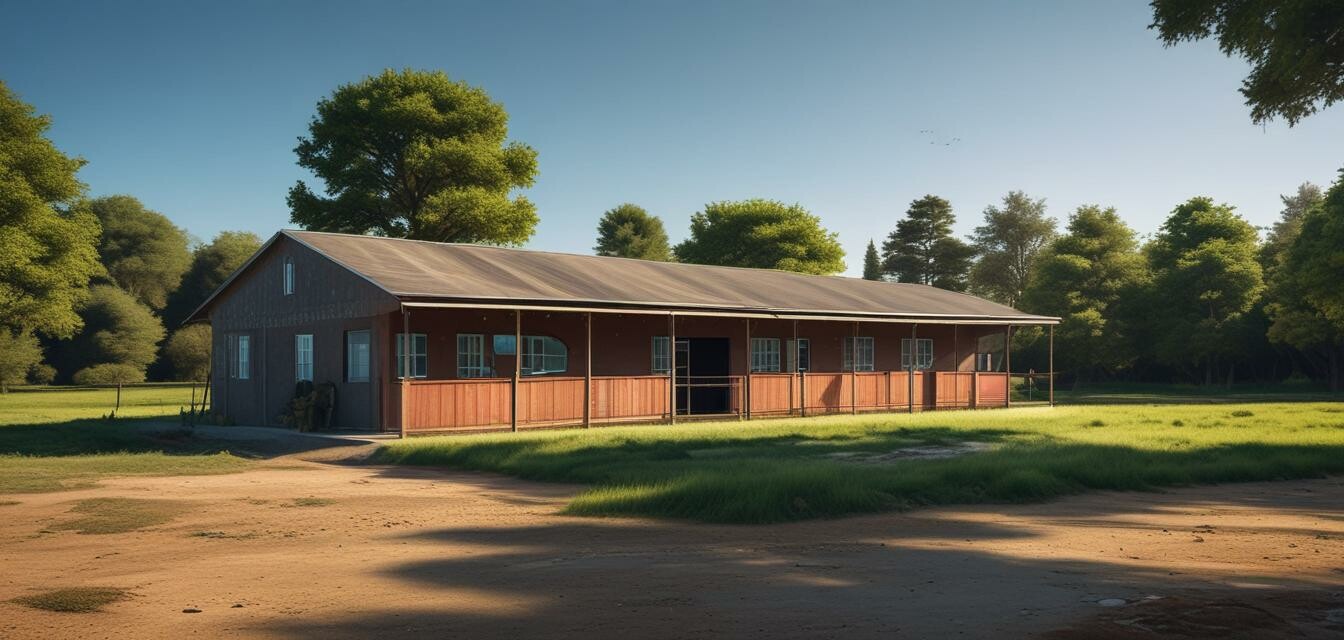
The Impact of Climate Change on Horse Care
Key Takeaways
- Climate change has a variety of impacts on horse care practices.
- Stable management, feed supply, and horse health are all affected.
- Equestrians can adapt their practices to mitigate these effects.
- Understanding these changes can help improve the well-being of horses.
- Awareness of seasonal changes is crucial for effective horse care.
Climate change is a pressing issue that affects various aspects of our lives, and the world of horseback riding is no exception. As equestrians, it's essential to understand how these environmental shifts influence horse care practices, from stable management and feed supply to overall health and well-being of the animals. In this article, we explore the impacts of climate change on horse care and highlight necessary adaptations equestrians can make.
Understanding Climate Change
Before diving into the direct effects on horse care, it's helpful to understand what climate change encompasses. Climate change refers to long-term alterations in temperature, precipitation, and other atmospheric conditions. These changes are typically driven by factors such as greenhouse gas emissions and urban development. For horse owners and riders, these shifts can create challenges that require immediate attention.
Effects of Climate Change on Horse Care Practices
| Aspect | Impact | Adaptation Strategies |
|---|---|---|
| Stable Management | Increased temperatures can affect stable ventilation and comfort. | Implement better ventilation systems; adjust bedding materials. |
| Feed Supply | Variability in grass growth and forage availability due to changing climates. | Utilize high-quality feed alternatives; monitor forage quality. |
| Horse Health | Heightened risks for heat stress and respiratory diseases. | Ensure hydration; provide cooler exercise times; regular health check-ups. |
| Pest Control | Changes in pest populations can lead to increased resistance. | Implement integrated pest management strategies; monitor pest activity closely. |
Stable Management and Climate Adaptation
With climate change, stable management practices may require adjustments to ensure that horses remain comfortable and healthy. Higher temperatures and extreme weather events can create stressors on your horse's environment.
- Temperature control: Use fans, misting systems, or shaded areas to keep stables cool.
- Ventilation: Proper airflow is crucial to avoid respiratory issues; consider design changes.
- Bedding materials: Choose absorbent and softer bedding to promote comfort in fluctuating conditions.
The Impact on Feed Supply
Climate change can lead to unpredictable weather patterns, impacting the quality and quantity of forage available for horses. Influences like droughts or unexpected storms can alter growth periods for grass, which directly affects feeding practices.
- Monitor forage availability: Stay informed about local climate statistics and adjust feeding practices accordingly.
- Explore alternatives: Consider supplements or hay alternatives when forage is scarce.
- Storage practices: Implement better storage solutions for feed to prevent spoilage due to unexpected weather conditions.
Health Concerns Related to Climate Change
The health of horses can be significantly impacted by climate change. Increased temperatures and changing moisture levels can create an environment conducive to diseases and pests.
- Heat stress: Ensure horses are hydrated and limit exercise during peak heat hours.
- Respiratory issues: Watch for signs of respiratory distress and maintain clear, dust-free environments.
- Regular health checks: Schedule routine veterinary visits to catch potential health issues early.
Weather Variability and Seasonal Changes
Understanding weather patterns is vital for effective horse care. With climate change comes the need for horse owners to pay closer attention to seasonal shifts that could impact riding and care routines.
| Season | Climate Effects | Care Adjustments |
|---|---|---|
| Winter | Potential for heavy snow and freezing temperatures. | Manage shelter and feeding; ensure proper blankets are used. |
| Spring | Rapid weather changes can affect grass growth. | Monitor pasture conditions; adjust spring training schedules. |
| Summer | Increased heat and humidity lead to stress on horses. | Change riding times; provide plenty of water and shade. |
| Fall | Weather patterns can be volatile with potential storms. | Prepare stables for changing conditions; stock up on feed. |
Conclusion
Climate change poses numerous challenges for horse care practices. By understanding the potential impacts, equestrians can adopt proactive strategies to maintain their horses’ health and comfort. Staying informed about the latest climate trends and making necessary adjustments can help ensure a better riding experience and the well-being of our equine companions.
Pros
- Improved awareness of environmental impacts on horse care.
- Enhances overall horse health through proactive management.
- Promotes sustainable practices among equestrians.
Cons
- Potential for increased costs in modifying stable environments.
- Challenges in finding quality feed alternatives during shortages.
- Need for continuous education on new climate conditions.
For further insights into more trends in the equestrian world, check out our section on news and trends or explore our equestrian gear for innovative solutions to enhance your riding experience.
